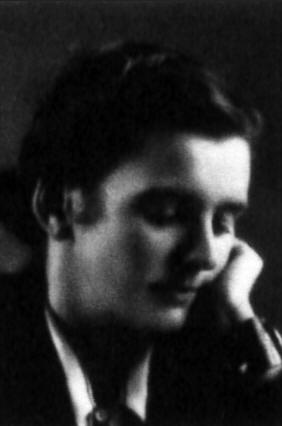Queer Places:
22 Bury Walk, Chelsea, London SW3 6QB, UK
St. Paul's Churchyard
Covent Garden, London Borough of Camden, Greater London, England
 Sophie Fedorovitch (3 December 1893 – 25 January 1953)[1] was a Russian-born theatrical designer who worked with ballet choreographer Sir
Frederick Ashton from his first choreographed ballet in 1926 until her accidental death in 1953.
Jean Cocteau was adept
at passing on his enthusiasms to his friends: ‘There was the camp scene at
Toulon, a real sailors’ port, where an English crowd of Bohemian balletomanes
congregated around Cocteau – Frederick Ashton,
Sophie Fedorovitch,
Edward
Burra,
Constant Lambert.’
Sophie Fedorovitch (3 December 1893 – 25 January 1953)[1] was a Russian-born theatrical designer who worked with ballet choreographer Sir
Frederick Ashton from his first choreographed ballet in 1926 until her accidental death in 1953.
Jean Cocteau was adept
at passing on his enthusiasms to his friends: ‘There was the camp scene at
Toulon, a real sailors’ port, where an English crowd of Bohemian balletomanes
congregated around Cocteau – Frederick Ashton,
Sophie Fedorovitch,
Edward
Burra,
Constant Lambert.’
Fedorovitch was born and raised in Minsk, Russian Empire (now Belarus) and studied painting in Kraków, Moscow, and St Petersburg. She migrated from Russia to England in 1920. She was established as a painter until she met Ashton, after which she increasingly came to devote her career to set and costume design.[2]
Ashton and Fedorovitch met in 1925, introduced by Marie Rambert, who had met her in 1921. They worked together from A Tragedy of Fashion, Ashton's first ballet in 1926.[3] Costumes and scenery were by Fedorovitch, who continued to work with Ashton for more than twenty years, and became, in his words, "not only my dearest friend but my greatest artistic collaborator and adviser".[2] As a friend and collaborator, she did most of her early works for Ashton.[4] Altogether, they collaborated on eleven works.[2]
In 1940, Fedorovitch did stage design and "simple but gorgeous costumes" for choreographer Andrée Howard's best known work La fête étrange, for London Ballet, based on an episode in Alain Fournier's novel Le Grand Meaulnes.[5] It has been performed over 200 times by The Royal Ballet, and by Scottish Ballet.
Her confidants, in addition to Ashton, included
Barbara Ker-Seymer,
Olivia Wyndham,
Marty Mann and
Lucy Norton.[6]
Edward Burra visited Paris with Lucy Norton and Sophie Fedorovitch
and Sophie painted a picture of him, now lost. In her 2012 article in Research in Dance Education, Elizabeth McLean's view was that Fedorovitch had a "formative influence" on British ballet design of the 1930s and 1940s, and that she should be considered the equal of her contemporary,
Christian Bérard.[7]
Fedorovitch designed for several other British choreographers including Ninette de Valois and
Antony Tudor, as well as for opera and theatre. From 1951 until her death in 1953, she was a member of the artistic advisory panel of Sadler's Wells Ballet, a role she had unofficially undertaken for many years.[8]
Fedorovitch died as a result of a gas leak at her house at 22 Bury Walk, Chelsea.[1] The house, known as the "Gothic Box", was left to
Simon Fleet, later mentor to fellow interior designer
Nicky Haslam.[9] A memorial plaque to "Sophie Fedorovitch, costume designer" was subsequently erected there.[9]
Ashton dedicated A Month in the Country to her memory and wrote ‘Her method of designing seemed to be a process of elimination, clearing the stage of all unnecessary and irrelevant details’.[10]
My published books:


BACK TO HOME PAGE

-
Sophie Fedorovitch - Wikipedia
- Woods, Gregory. Homintern . Yale University Press. Edizione del
Kindle.
- Edward Burra: Twentieth-century Eye
Jane Stevenson
Jonathan Cape, 2007
 Sophie Fedorovitch (3 December 1893 – 25 January 1953)[1] was a Russian-born theatrical designer who worked with ballet choreographer Sir
Frederick Ashton from his first choreographed ballet in 1926 until her accidental death in 1953.
Jean Cocteau was adept
at passing on his enthusiasms to his friends: ‘There was the camp scene at
Toulon, a real sailors’ port, where an English crowd of Bohemian balletomanes
congregated around Cocteau – Frederick Ashton,
Sophie Fedorovitch,
Edward
Burra,
Constant Lambert.’
Sophie Fedorovitch (3 December 1893 – 25 January 1953)[1] was a Russian-born theatrical designer who worked with ballet choreographer Sir
Frederick Ashton from his first choreographed ballet in 1926 until her accidental death in 1953.
Jean Cocteau was adept
at passing on his enthusiasms to his friends: ‘There was the camp scene at
Toulon, a real sailors’ port, where an English crowd of Bohemian balletomanes
congregated around Cocteau – Frederick Ashton,
Sophie Fedorovitch,
Edward
Burra,
Constant Lambert.’ 
